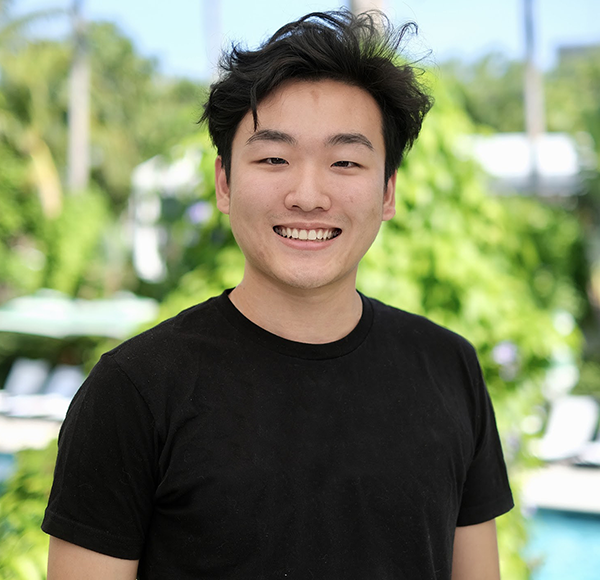Lab work makes for easier class work
Terry Feng says his research experience gave him an edge in working with the tools and equipment he used in his materials science courses—particularly in using the scanning electron microscope to study material properties of the gallium oxide films he grew in Lisa Porter’s lab.
When Terry Feng graduates in the spring, he hopes to find a job as a software engineer with a cutting-edge software development company. But that doesn’t mean that he didn’t find value in the time he spent during his junior year on Lisa Porter’s research team

He will graduate with a double major in materials science and engineering and computer science. And he says his research experience gave him an edge in working with the tools and equipment he used in his material science courses—particularly in using the scanning electron microscope to study material properties of the gallium oxide films he grew using various temperatures during the chemical vapor deposition process.
Gallium oxide is an emerging ultra-wide bandgap semiconductor material that has potential uses in high-power and high-temperature devices. The research was conducted under the direction of Lisa Porter, a professor of materials science and engineering whose research is geared toward advanced electronic materials for future energy applications, semiconductor materials and devices for extreme environments, high efficiency electronics, and nanotechnology.
Porter invited students in her materials science course to apply for positions on her research team and selected Feng, who says the experience has also been beneficial in the work he is doing for this capstone course this year.
Porter says she typically has at least three or four undergraduate students working with her research team. She says they bring energy and enthusiasm to the group.
By participating in research, they get professional experience meeting and interacting with others, and they get to see how complex the work is. They also get to see that research requires both planning and the unavoidable need to revise plans.
Lisa Porter, Professor, Materials Science and Engineering
“By participating in research, they get professional experience meeting and interacting with others, and they get to see how complex the work is. They also get to see that research requires both planning and the unavoidable need to revise plans,” explained Porter.
Many students, like Feng, also get the chance to present posters at symposiums, which helps them learn to talk about the research.
My research experience showed me new ways to examine material properties, and leveraging these tools has allowed me to conduct a deeper analysis for the capstone.
Terry Feng, Undergraduate student, Materials Science and Engineering
Feng’s group is investigating the effects of different surface treatments on 3D printed aluminum parts that Boeing hopes to be able to adhere with epoxy bonds on the shop floor instead of having to send out, which is the current method.
“My research experience showed me new ways to examine material properties, and leveraging these tools has allowed me to conduct a deeper analysis for the capstone,” said Feng.
